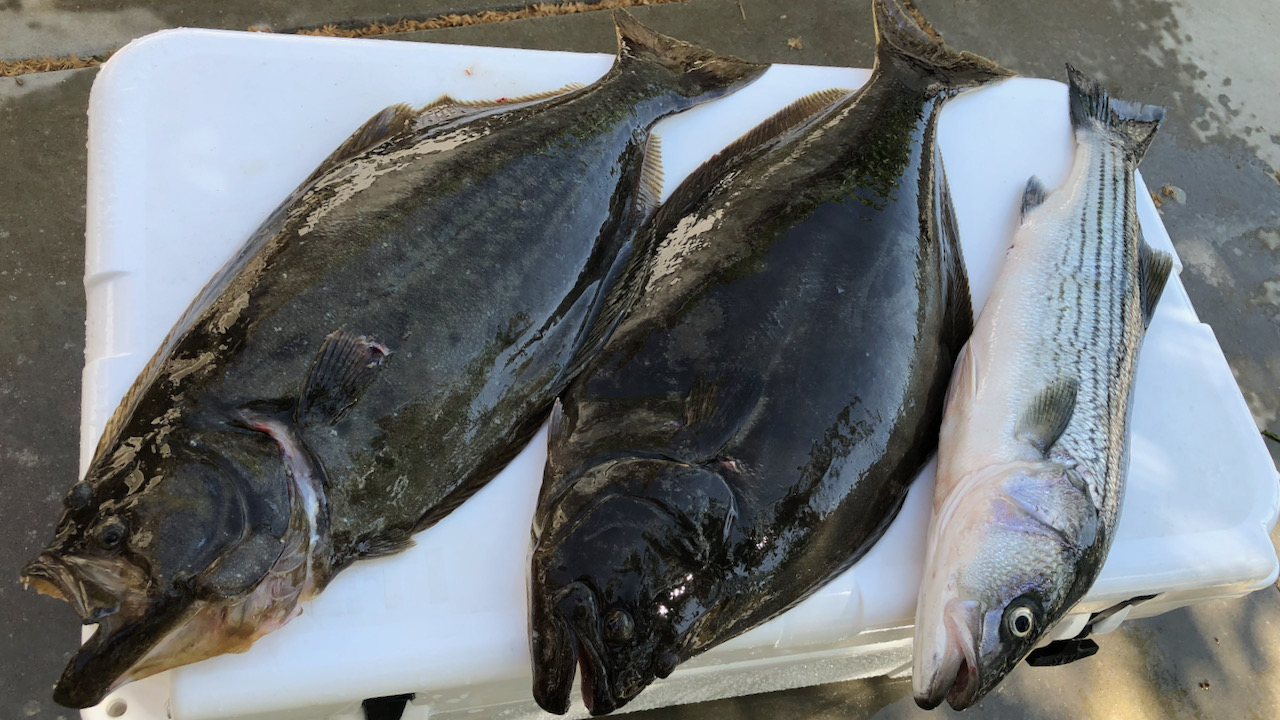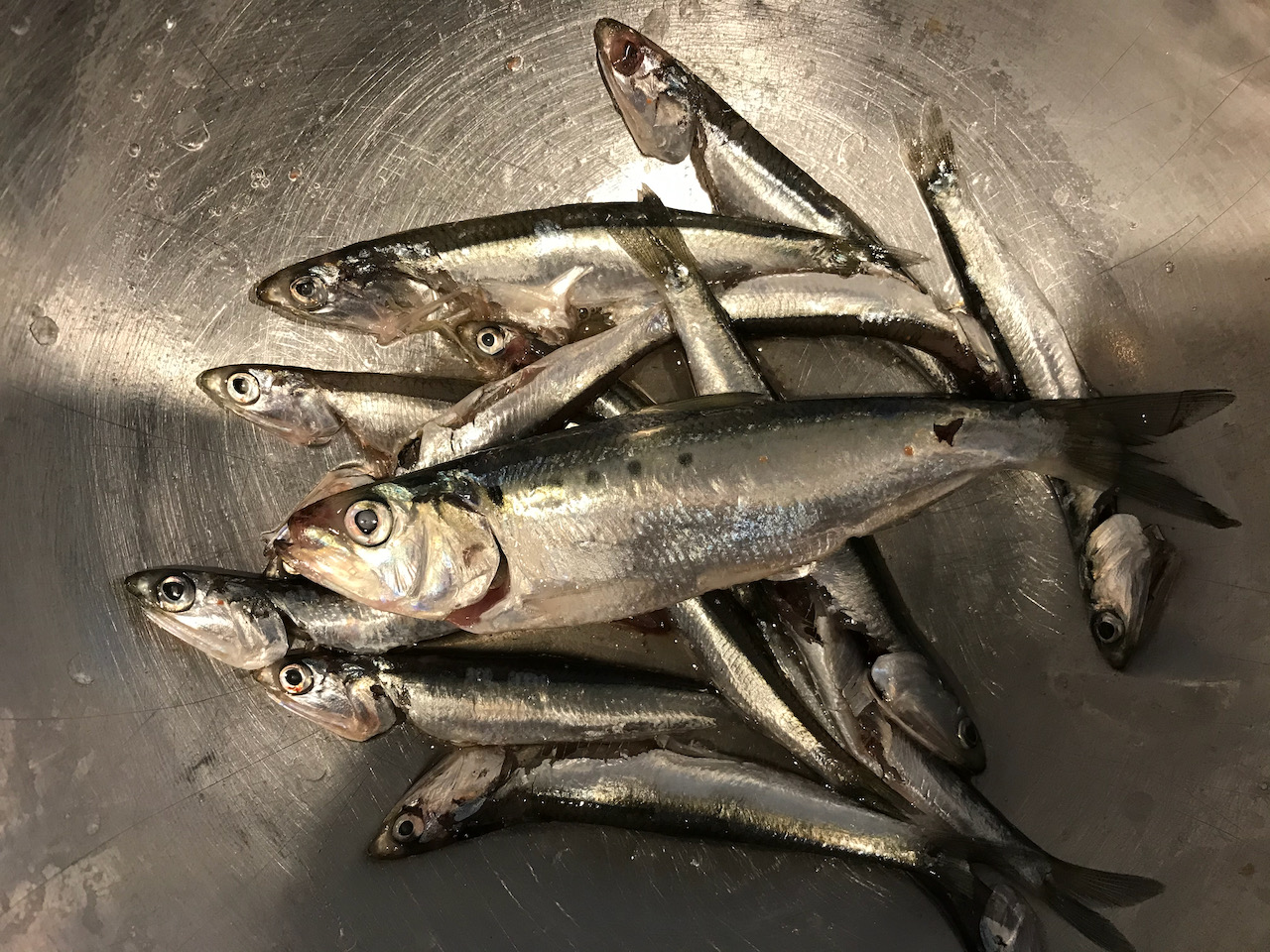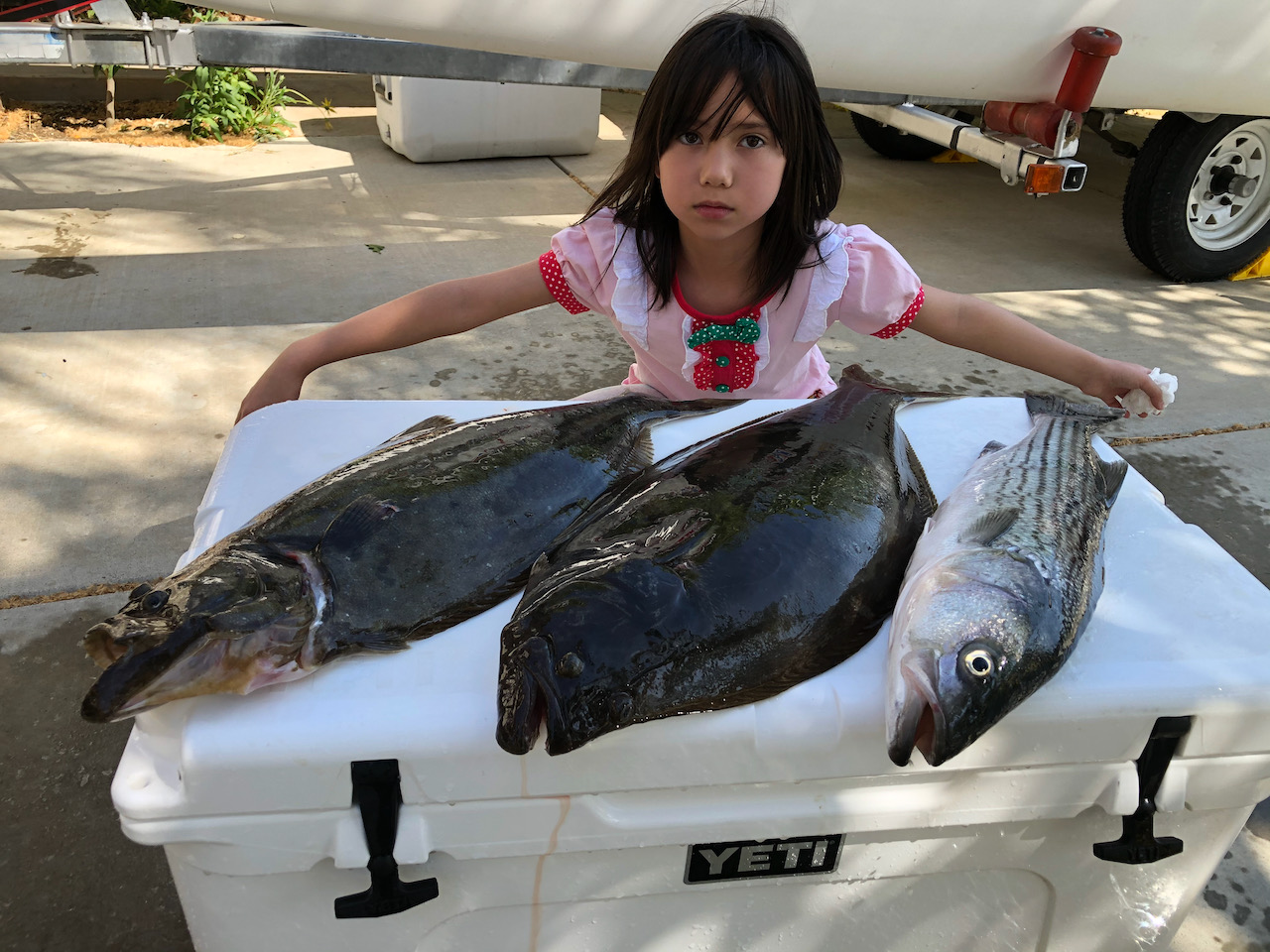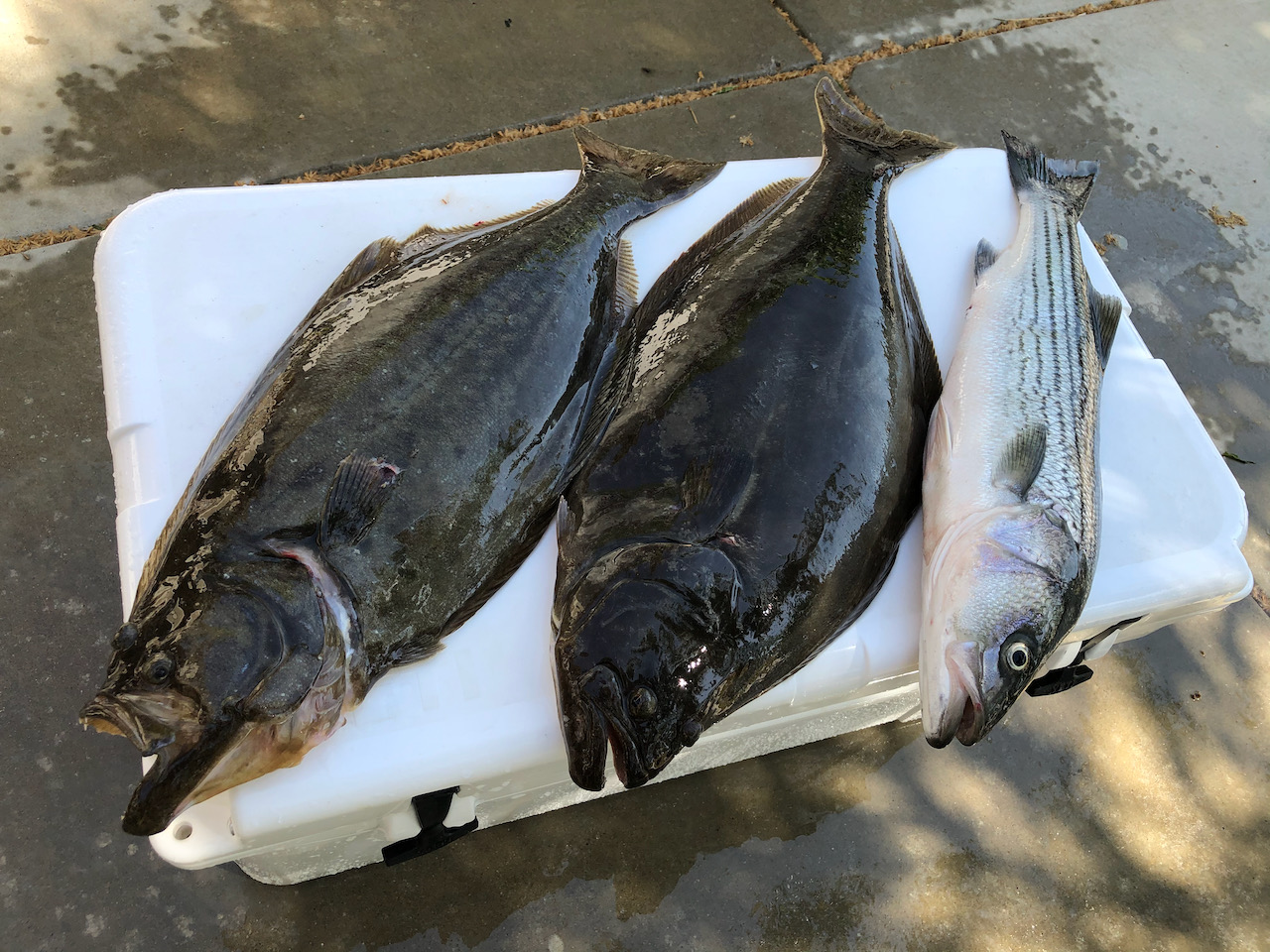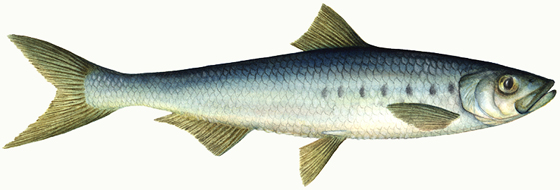When I arrived at the fishing grounds I dropped a herring behind my '77 rig and immediately hooked up.
Posted on May 2, 2020
If you're familiar with Miracle Workers you will know about the enterprising Mr. Michael "Mikey" Shitshoveler and his wonderful motto 'Anytime, Anywhere, No Matter How Big'. I'm about to steal his motto for fishing as it perfectly describes the kind of attributes necessary to excel in this sport.
Anytime because you need to be there and ready when marine conditions are right and the bite is on. Often that involves getting up in the middle of the night and pushing off into the ocean at first light.
Anywhere because the business location is where the fish are, and that changes dramatically throughout a season.
No Matter How Big is almost self-explanatory. I am always ready to take on a thresher shark or other big fish, but the hidden side of this part is to also enjoy small fish like the sardine I caught on this day. There is beauty in all of it and I'm starting to pay more attention to very small fish while I like to catch a trophy fish as much as the next guy.
I fished Ferry Point for the first time from a kayak, and not particularly well, and yet I was surprised by the number of halibut coming through this area. I am familiar with these waters from practicing rolling and trips across the bay to Angel Island and Paradise, but for fishing I always preferred ocean waters. This year, and mostly due to Jason's influence, I started fishing the bay as well.
I had left my home at 5am but by the time I arrived at Ferry Point the entire NCKA gang was already on the water and slaying fish. I did my best to catch up. When I arrived at the fishing grounds I dropped a herring behind my '77 rig and immediately hooked up. Kevin came over to lend me his net, and so I landed my first halibut of the day.
Later on I noticed a steep drop off from 12 feet to 45 feet of water. It was like a hole in the bay, a cul-de-sac, where the shipping lane meets the dock. The hole was teaming with anchovies. I lowered my sabiki and promptly loaded it up. Live bait is my ultimate dream in fishing. I switched rigging to a universal rig (3-way) and sent a lively anchovy back down, right to the bottom of that giant bait ball.
Within minutes, I landed another halibut followed by a striper.
On another sabiki drop I loaded up on anchovies again but suddenly felt a heavy pull on my 7 pound leader. The unmistakable head shake informed me that a halibut had just gobbled up one of those flopping chovies. The sabiki hook is far too small to land a halibut, and I was lucky that I didn't lose the entire rig.
As mentioned I didn't think I fished particular well this day, even though my catch says otherwise, because I had a tremendous amount of trouble with my sabiki rod. The rod is too heavy, takes up too much deck space, bounces all over the place, and those tiny and super sharp sabiki hooks snag everything (including Jason's boat at one point). Sabikis and sabiki rods on a sea kayak are a love/hate thing. I love it when I have live bait but absolutely hate everything else about it.
For my next adventure I will feverishly work on a better sabiki solution, something that is more compatible with a sea kayak, or I will be in sabiki purgatory forever. Also, I need to re-activate my bait torpedo, find a good way to secure it to the back deck and a workable way to deploy it in such a way that it doesn't interfere my other gear. Real estate on a sea kayak is more valuable than the priciest Manhattan penthouse.
On the water, at a respectful distance of 'one covid' (a new measuring unit which equals 6 feet), I met Eddie, Deep Sea Drew, Koji, Kevin and Jason. I felt quite emotional about this encounter. Suddenly the world seemed wonderful again as if Covid-19 had never happened. It was a long winter and seeing the whole gang back in action was a happy sight.
Back at home we pan-fried the left-over anchovies for a delicious snack. But wait, one anchovy was much bigger than the others. At closer inspection it became clear that I had caught a Pacific Sardine. This may have been my first sardine ever. These fish used to be so plentiful in days long gone but unless I overlooked a sardine when herring fishing, small herring and sardines are of very similar size, I never caught one yet.
Off the coast of California, Pacific sardines spawn year round and can even spawn multiple times per season. Spawning occurs in the upper 165 feet of the water column and as far as 100 miles offshore. The eggs are fertilized externally and single large female can produce up to 200,000 eggs per season. The eggs hatch near the surface within three days and the young fish journey inwards to gather in schools by the beach. Females grow faster than males and some individuals mature within the first year. Having no teeth, Pacific sardine are filter feeders consuming small planktonic copepods and crustaceans. They can grow up to 12 inches long and have been found to live as long as 13 years. Pacific sardines are an integral part of the marine food web providing food for many marine birds, fishes and mammals.
Pacific sardines, also known as pilchards, are a very important part of the oceanic food chain and can form schools of up to10 million fish. They are found from southeastern Alaska to the Gulf of California, Mexico as well as Peru and Chile. They prefer warmer water and live in the pelagic zone of the water column in nearshore and offshore areas all along the coast.
The Pacific sardine has an elongated body that is silver in color with dark blue on the back and shades of purple and violet along the sides. Black spots dot its back and sides, and the tail is forked. The sardine’s head is compressed and has a small mouth containing no teeth. Small, fresh sardines have a delicate sweet flavour while larger sardines have a more full oily flavour. Grilling sardines with olive oil, lemon and salt is all it takes to enjoy the rich flavor.
Source: http://thisfish.info/fishery/species/pacific-sardine
The chovies, and also sardines, when fresh and fried until slightly crispy, are so delicious that I sometimes think that I should leave big fish to others and just specialize in the smaller pelagics. Pacific Mackerel is another fish that I absolutely adore.
The catch:
- 24" Hali left-eyed
- 26" Hali right-eyed
- 24" Striper
Distance: 7 miles
Duration: 4:45 hours
A short paddle led to a nice catch.
